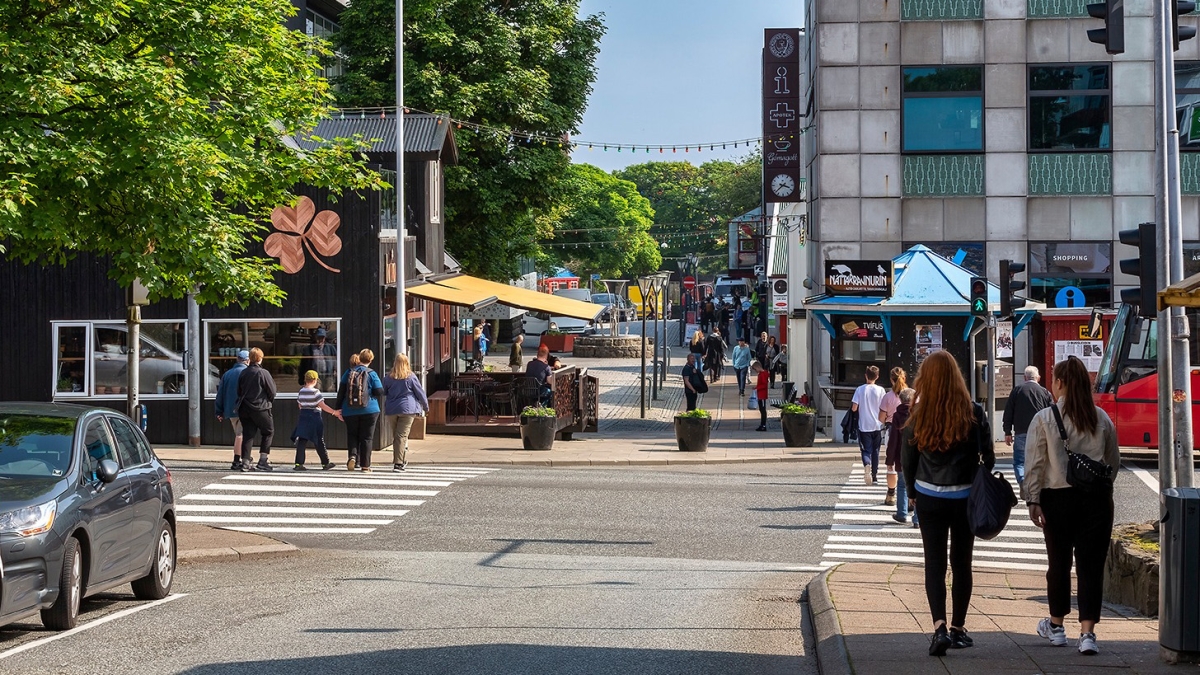Population
10. Apr 2024
Population on 1 March: 54,591 – up 0.8% year-on-year

Population growth in the Faroes is continuing for the tenth consecutive year. The growth has slowed down somewhat in the past two years. The excess of births has been relatively low, initially due to higher death rates and later due to a lower birth rate. Net migration has also gone down, with lower figures for both emigration and immigration. The resulting growth slowdown can be seen in the graph below, which shows the population trend since 1985.
[px-graph-1]
The population trend is determined by net migration (the difference in the number of immigrants and emigrants) and the excess of live births over deaths. The population growth in the past year comes from an excess of births of 165 people and a net migration figure of 274 people. The graph below shows that the population growth over the past year was slower than in the previous 12-month period.
Fewer migrations
The graph below indicates decreasing trends in both immigration and emigration. Immigration appears to be decreasing slightly more than emigration, resulting in lower net migration. In the 2017-2022 period, the annual net migration figure ranged between 400 and 500. This figure reached 274 in the past year.
[px-graph-2]
Fewer births and fewer deaths
The graph below shows a downward trend in both birth rates and death rates over the past two years. The birth rate was relatively high in autumn 2020 but has since been on a steady decline, now matching the lowest figure since records began in 1985. The death rate has returned to levels seen before the sudden increase in deaths in 2022. Prior to the large decline in the excess of births, which began two years ago, the excess of births figure ranged between 200 and 300. In the past year it was 165.
[px-graph-3]
Growth in several municipalities
Fifteen of the 29 municipalities saw growth in the past year. Tórshavn, Nes, Klaksvík, Runavík and Vága municipalities had the highest growth. Within these municipalities, the highest growth was in Tórshavn, Hoyvík, Klaksvík, Strendur, Saltangará and Sandavágur. The population declined in 14 municipalities, with the biggest declines in Hvalba, Eiði, Tvøroyri and Sørvágur municipalities. The table below shows the population across all 29 municipalities, with details for each town and village on 1 March 2023 and 1 March 2024.
[px-graph-5]
Population figures have a one-month lag
The figures have a one-month lag due to delays in registrations, especially regarding address changes, where many registrations are made after the month of address change has ended. To accommodate as many corrections as possible, there is a one-month lag in the data.
About the population figures
The population is defined as all individuals registered in the national register as residents of the Faroe Islands. Population data includes date of birth, gender, place of birth, citizenship, relationship status, and, where applicable, information on immigration and emigration, domestically as well as between the Faroe Islands and other nations.
About the trend
The trend describes the population trend by adjusting for seasonal effects and other error components in the population figure.